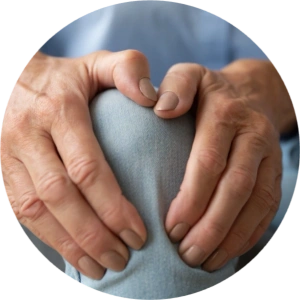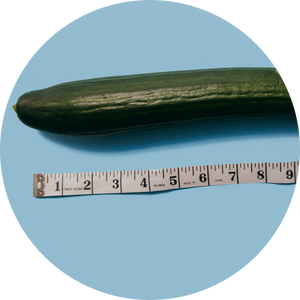Arthritis is a common, painful joint condition that affects nearly 60 million people in the United States alone. While osteoarthritis and rheumatoid arthritis are two of the most common forms of arthritis, there are at least 100 other varieties – each with its unique causes, symptoms, and treatments. The one thing that unites all forms of arthritis is inflammation. This should come as no surprise since the word arthritis literally means “joint inflammation.”
Inflammation is your immune system’s natural response to physical injuries or viral infections. When inflammation occurs, part of the body becomes reddened, swollen, hot, and –– in many cases –– painful. Inflammation can be helpful in short bursts, as it keeps you healthy and protected. However, if it lasts for long periods of time, inflammation can result in severe damage.
Maintaining a strong immune system can help to balance your inflammation levels, but that might not be enough to prevent arthritis.
What Causes Arthritis?
The cause of your arthritis will largely depend on the type of arthritis that you have. When people refer to arthritis, they are typically referring to osteoarthritis or rheumatoid arthritis.
Here are the most common causes of arthritis.
Overuse
When there is a lot of pressure being placed on certain joints, arthritis can occur. Over time, the constant wear and tear of your joints can cause significant damage to your cartilage. The degeneration of cartilage is known as osteoarthritis. Since nearly 32.5 million Americans have osteoarthritis, it’s the most common type of arthritis by far.
Overusing or injuring a joint — especially your load-bearing ones — can eventually cause you to develop pain, swelling, and stiffness. Typically, these symptoms of osteoarthritis start small and ramp up over time.
Autoimmune disorder
Inflammation is one of your immune system’s strongest weapons. Whenever your immune system perceives a threat, it unleashes an attack of inflammation to fight it off. Having an autoimmune disorder will mean that your immune system will incorrectly perceive healthy parts of your body as a threat.
Rheumatoid arthritis, lupus, and scleroderma are a few of the common types of arthritis that occur when your immune system isn’t functioning correctly. These types of arthritis can result in inflammation damage being done to all parts of your body. They specifically cause joint damage because they make your immune system target your synovium – a soft tissue that lines your joints.
Chemical buildup
The buildup of certain chemicals in your joints can cause debilitating arthritis. Uric acid is especially a problem if it builds up in your joints.
This chemical is naturally produced by your liver and plays a role in several essential bodily functions. Having too much uric acid in your blood can cause it to build up in your joints and crystallize. This condition is known as gout, and it’s one of the more common types of arthritis.
How Do You Treat Arthritis?
While there is no cure for arthritis, its symptoms are certainly treatable. Here are six of the most effective treatments for arthritis:
Medication
Regardless of the type of arthritis you have, you’ll probably need to use one or multiple types of medication to address pain, swelling, and stiffness in your joints. There is a wide variety of medications that can help with arthritis. You can find most of these medications over the counter, but might need prescription strength for severe arthritis.
Depending on your specific needs, it may be a good idea to use a combination of oral and topical medications. In terms of topical medications, you’ll have a wide variety of creams, gels, sprays, ointments, and patches from which to choose.
These are the most effective topical and non-topical medications for treating arthritis:
-
Nonsteroidal anti-inflammatory drugs (NSIADs) such as ibuprofen, aspirin, and naproxen can help to reduce the pain and inflammation in your joints. You can easily find these ingredients in most pharmacies in oral form. They also come in a topical form that you can apply to specific joints.
-
Analgesics such as acetaminophen, tramadol, oxycodone, or hydrocodone can help to reduce the pain in your joints, but won’t have any effect on the inflammation. Acetaminophen can be easily purchased over the counter, but you’ll need a doctor’s prescription for tramadol and opioids (like oxycodone and hydrocodone). These opioids are rarely used in the long term.
-
Counterirritants such as menthol and capsaicin can help to disrupt the pain signals sent from your joints. These medications are only available in topical form and will essentially numb the areas where you apply them.
-
Corticosteroids such as prednisone and cortisone can help to reduce the inflammation in your joints and suppress an overactive immune system. These medications are most effective as injections, but they can be used topically too.
-
Disease modifying antirheumatic drugs (DMARDs) such as methotrexate and hydroxychloroquine can help to stop your immune system from attacking your joints.These medications are a very common treatment for arthritis that is caused by an autoimmune disorder.
Diet
Making adjustments to your diet can be helpful in managing your arthritis symptoms. For example, some foods can help you to reduce inflammation, one of the main triggers of arthritis pain. Tomatoes, olive oil, leafy green vegetables, fruits, and fatty fish are a few of the many foods with anti-inflammatory properties.
These foods and several others are included in the Mediterranean Diet, a diet known for its various health benefits. Decreasing the inflammation in your joints can help to reduce the symptoms and prevent further damage.
You should also avoid foods that cause inflammation. Minimize your consumption of refined carbohydrates, processed meat, margarine, and sugar-loaded beverages.
Exercise
It might be challenging at first, but exercise is important for managing arthritis. Staying active is an excellent way to keep your joints from stiffening up. Walking, light jogging, swimming, or other versions of low-impact cardio should be enough to keep your joints loose and limber.
Interestingly enough, lifting weights can also be helpful for people suffering from arthritis. Having stronger muscles around your affected joints can help alleviate pressure and reduce inflammation. This can help reduce pain, discomfort, stiffness, and damage to your joints.
Weight loss
Losing weight can benefit your entire body, including your joints. Carrying around extra pounds can cause a lot of unnecessary wear and tear on your joints. It’s one of the largest risk factors for developing osteoarthritis.
For every additional pound, you’re creating an extra three to five pounds of pressure on your joints. In other words, simply losing 20 pounds can take anywhere between 60 and 100 pounds of pressure off your joints. Less pressure means less inflammation and less pain.
Supplements
Any supplement that reduces inflammation can be beneficial to individuals living with arthritis. Green tea, curcumin, garlic, and fish oil are some of the commonly used supplements that are known for their anti-inflammatory properties.
Goldenrod – a flowering plant and dietary supplement – is another potential treatment option. In various scientific studies, goldenrod has been shown to reduce inflammation, both when it’s used topically and orally. If you are allergic to some of the medications used for managing arthritis, using supplements may be a helpful alternative.
Surgery
Surgery is usually considered a last resort for very severe cases of arthritis. For most people, less invasive treatment options are sufficient for managing arthritis symptoms. However, if the symptoms are getting worse and impacting your everyday life, your physician may recommend one of the following surgeries:
-
Joint repair surgery requires a small incision to repair or realign tissues in your joint. In some cases, the surgeon will install screws, plates, rods, or other corrective items to help the joint function properly.
-
Joint fusion surgery is reserved for smaller joints and will require parts of your bones to be removed. In this surgery, the ends of the affected joint bones are taken out and two bones are fused together.
-
Joint replacement surgery involves the partial or entire removal of your joint. An artificial joint made of metal and plastic is inserted to replace the damaged joint.
Learn More About Arthritis
Living with arthritis can be a painful and debilitating experience. Fortunately, the treatment options discussed above may be helpful in improving joint function, mobility, and comfort.
While there is no cure for arthritis, there are plenty of ways to reduce the severity of your symptoms.












